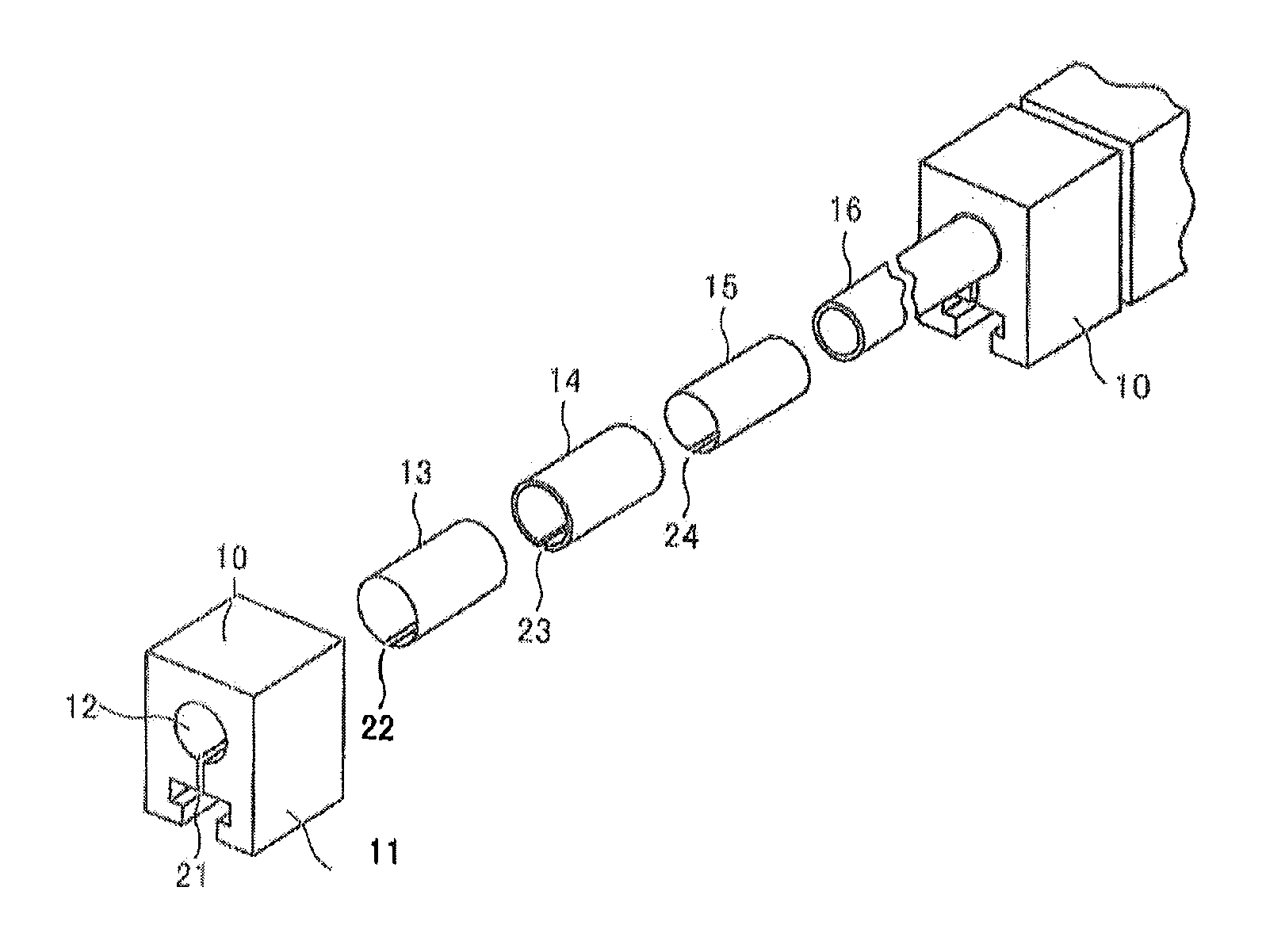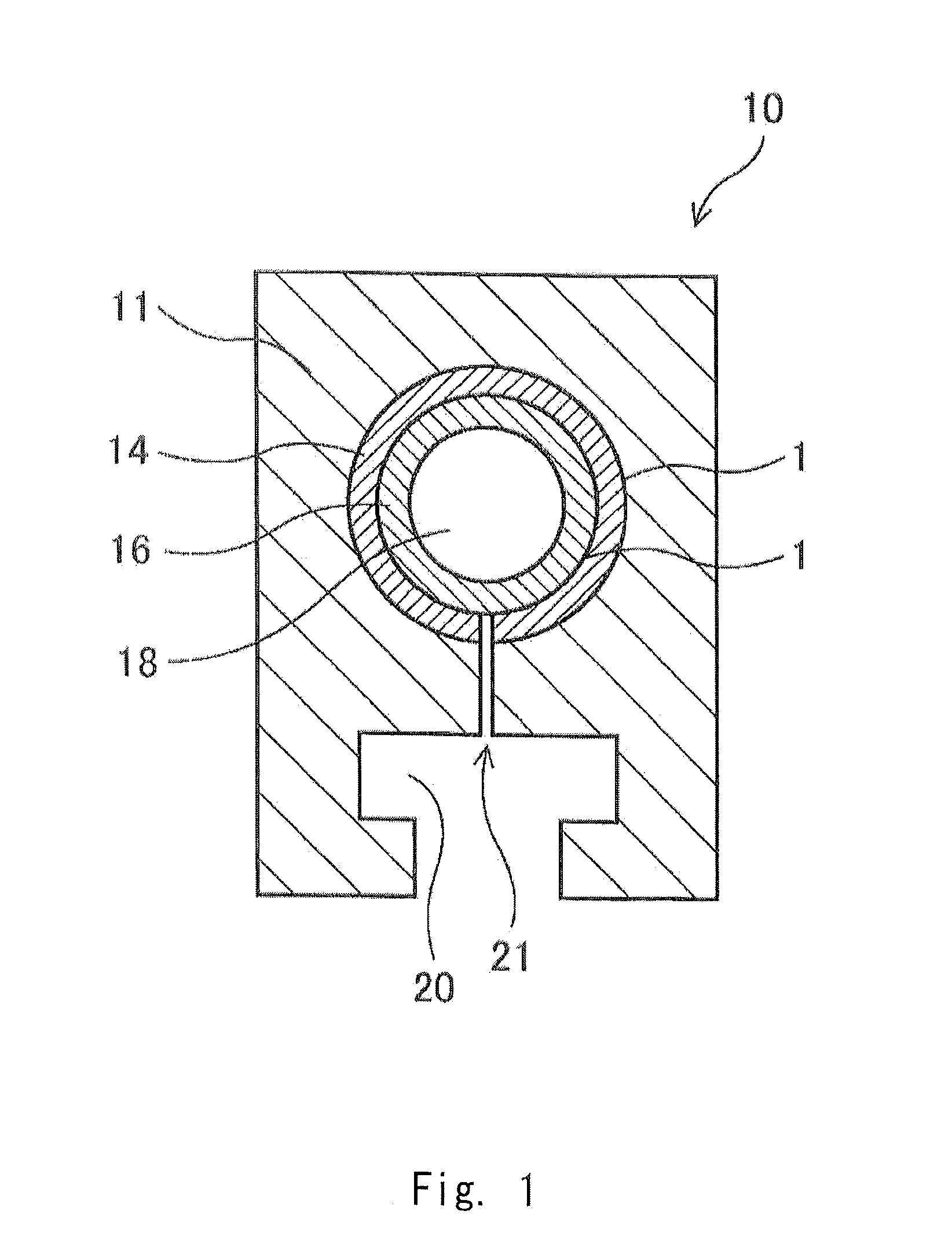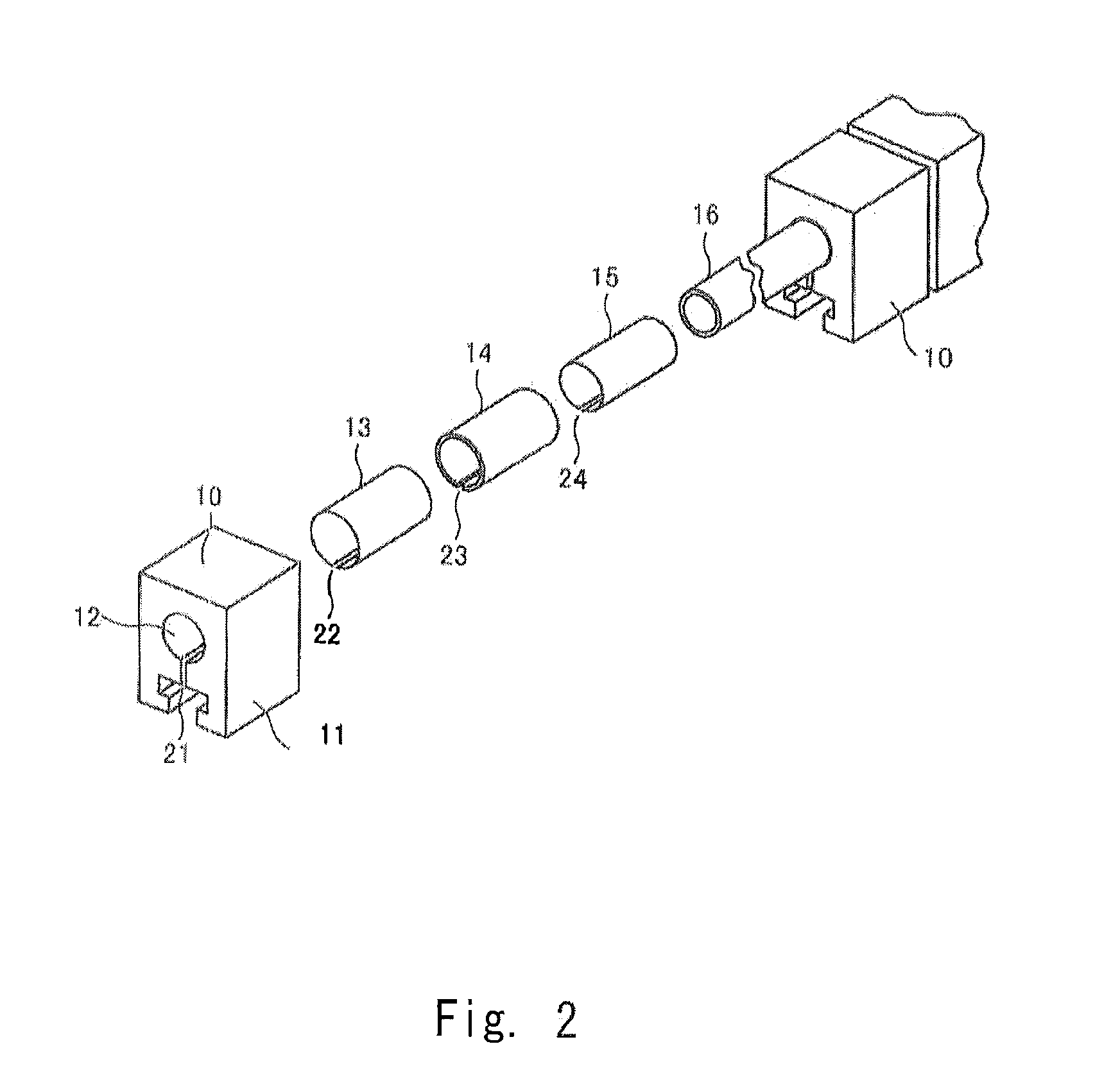Heat receiving tile formed of carbon fiber composite material and method of manufacturing the same
- Summary
- Abstract
- Description
- Claims
- Application Information
AI Technical Summary
Benefits of technology
Problems solved by technology
Method used
Image
Examples
Embodiment Construction
[0039]Hereinafter, high heat flux component, particularly a heat receiving tile used for a divertor of a nuclear fusion reactor and a manufacturing method thereof according to the present invention will be described in detail with respect to an embodiment. The present embodiment relates to a heat receiving tile used for the divertor of the Tokamak type nuclear fusion reactor. However, it is obvious that this invention can be widely applied to not only the plasma facing part of the blanket and the limiter of a nuclear fusion reactor but also a heat receiving tile formed by metallurgically joining a heat receiving block formed of a carbon material with a cooling tube formed of a copper alloy.
[0040]As shown in FIG. 1, the heat receiving tile 10 of this embodiment is provided with the heat receiving block 11 having a mono-block structure and formed of a carbon fiber reinforced composite material (CFC) and the cooling tube 16 formed of a copper alloy, such as chromium-zirconium copper (C...
PUM
| Property | Measurement | Unit |
|---|---|---|
| Thickness | aaaaa | aaaaa |
| Efficiency | aaaaa | aaaaa |
| Heat | aaaaa | aaaaa |
Abstract
Description
Claims
Application Information
 Login to View More
Login to View More - R&D
- Intellectual Property
- Life Sciences
- Materials
- Tech Scout
- Unparalleled Data Quality
- Higher Quality Content
- 60% Fewer Hallucinations
Browse by: Latest US Patents, China's latest patents, Technical Efficacy Thesaurus, Application Domain, Technology Topic, Popular Technical Reports.
© 2025 PatSnap. All rights reserved.Legal|Privacy policy|Modern Slavery Act Transparency Statement|Sitemap|About US| Contact US: help@patsnap.com



